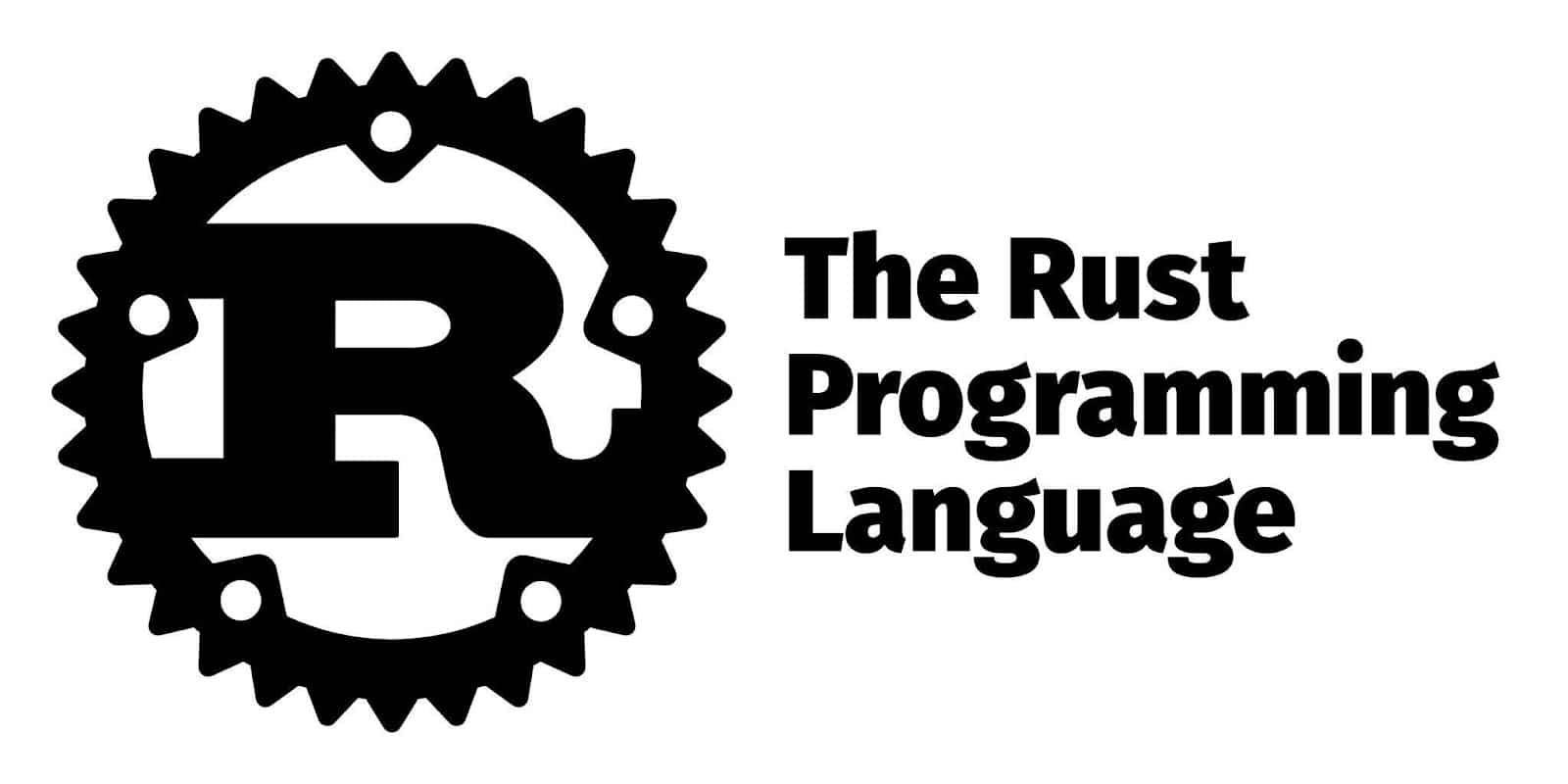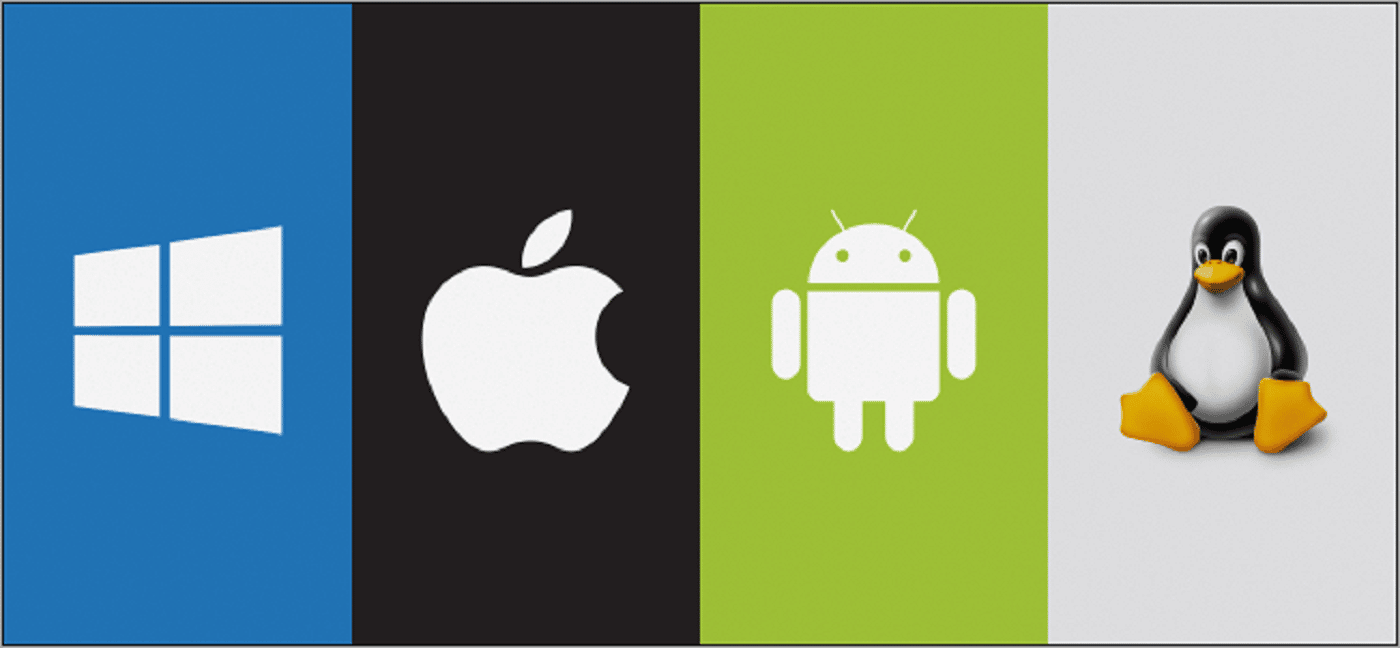Rust vs Python is a popular debate these days. While both of these languages can be used for general-purpose programming, one is better than the other in certain scenarios and niches.
To know which one should be used for your project, you should have a very good understanding of the features and architecture of both. This Rust vs Python article will help you with that.
Let’s get started!
What Is Rust?

Rust is a relatively new programming language that quickly became popular because of its ability to create high-performance, memory-efficient, and reliable applications. This statically-typed programming language has a similar syntax to C++.
It does not have any garbage collection or run time. Hence, Rust provides solutions to many issues in C++, including concurrency and memory management issues. Although it is a relatively young language, Rust marked the 7th year as being the most loved technology in the StackOverflow Developer survey 2022 as well.
Who Uses Rust?

Since Rust was introduced to the world, many companies, from startups to larger organizations, began to adopt it to enhance existing and build new software applications and services. Now, many world’s leading tech companies are using Rust. Here are how they use it.
- Amazon: Amazon uses Rust for its cloud services like Amazon Elastic Compute Cloud (EC2), Amazon Simple Storage Service(S3), and CloudFront. Amazon is also one of the companies that contribute to Rust.
- Dropbox: Dropbox, the world’s leading file hosting provider, uses Rust in its file synchronization service, which is one of its critical components.
- Google: Google is another company that is part of the Rust foundation. It uses Rust for Android development and is a major language in developing a Linux kernel operating system.
- Microsoft: Microsoft uses Rust in its Windows operating system, and they will launch a new version of Rust that enables developers to use Windows API for software development.
- Coursera: One of the world’s leading online learning platforms uses Rust for its programming assignments feature.
What Is Python?

Python is one of the most popular scripting languages in 2022. Python is used in many areas, including machine learning, data science, data visualization, data analysis, DevOps, automation, and testing.
The simple syntax of Python makes it an ideal choice for novice developers worldwide. The 2022 Stack Overflow Developer Survey revealed that it is the third most popular language among professionals and people learning to code. Python prioritizes object-oriented programming, although you can use it for functional programming as well.
Who Uses Python?

Python is widely used in IT, education, government, and financial industries. The following are the top tech companies that use Python.
- Facebook: Facebook engineers use Python along with PHP because Python allows them to develop and deploy applications and features faster. Python is used in Facebook infrastructure management and multiple services, including Facebook Ads API and a Python Async IRCbot framework.
- Google: Google uses Python in its scripting work because of its simplicity and efficiency. Google replaced its java-based first web-crawling spider with Python for web scraping.
- Netflix: Netflix is a company that uses Python for data analysis. Also, they use it in their Central Alert Gateway that sends user alerts and monkey apps that track security changes.
- Spotify: Spotify is another company that uses Python for data analysis. There are many other places they use Python. They use the Django framework and ZeroMQ networking library for back-end applications. Also, they use it for creating processes, scripting, and prototyping.
- Instagram: Instagram, a social media app that enables image and video sharing, has scaled its infrastructure using Python.
Key Features of Rust
Rust brings the best of C++ and additional features. The four main key features of Rust are memory safety, thread safety, and zero-cost abstractions.
Memory Safety
When using a language like C++, many memory issues can hinder the application’s performance. Rust solves most memory management problems through its ‘ownership model’ and type system, enabling programs to analyze memory at compile time rather than in run time.
It means variables have ownership of their memory and can burrow memory from other variables. This feature eliminates the need for a garbage collector and guarantees that Rust programs are bug-free at the compile time.
Thread Safety
Thread safety is a type of system that guarantees no race conditions at run time. When two or more threads simultaneously access the same memory location, a race condition occurs that can lead to abnormal behaviors in the program.
With Rust’s data ownership model, threads can only write to a variable if they own it or borrow it mutably. It ensures only one thread can access a variable at one time.
Zero-Cost Abstractions
As you continue with your development, you may be required to use more abstractions in your code to improve the code maintenance and to make adding more features easier using more abstractions in your code can impact your programs’ performance at run time.
Rust ensures abstractions are at zero cost. It means abstractions do not have run time overhead, or code with abstractions is similar to one that does not have any abstractions.
Cross-Platform Support
Rust allows the development of applications on multiple platforms like Windows, Linux, macOS, etc. Rust can easily handle the configurations across different platforms. Also, its cargo build tool helps to deploy the code into multiple platforms with a single command.
Key Features of Python
Python was originally developed for code readability. Therefore, its syntax is close to the English language. Also, Python is used by various academic groups for mathematical and scientific works. Therefore, it has a large set of libraries for maths and numerous calculations.
Simple English-Like Syntax
Python is one of the most loved general-purpose programming languages among people leaning toward code because of the easy English-like syntax that makes it easy to write code. Therefore, amateur developers find learning easy, and many use it as their initial programming language.
Also, its easy syntax structure enables faster development. You can write a Python program with fewer lines of code than in other languages. This ultimately reduces the time to deploy an application to the market.
Dynamically Typed
You do not need to define variable types in Python because the Python interpreter does that job for you at program run time based on the variable expression. Thus, you can focus directly on the functionality rather than taking time to correctly define variable types.
Large Community
Python has a large community with millions of people worldwide to support and contribute to its development. This large community is an asset to any Python developer because they can quickly find solutions to any problems they face in their development.
In addition, it means there are plenty of resources for you to learn about Python, like documentation, developer guides, videos, and tutorials.
Large Standard Library
Pythons; standard library consists of plenty of frameworks, modules, and libraries with reusable code for developing almost anything you want. Thus, you do not have to spend time and effort developing everything from scratch.
Cross-Platform Support

Python allows applications to run on multiple platforms like Windows, Linux, macOS, etc., eliminating the need to write separate code for each platform.
Pros & Cons of Using Rust
Rust has many advantages compared to disadvantages. Let’s find out what they are.
Advantages
The main advantage of Rust is its high performance. But that’s not the only one. The following list gives you all the main pros of Rust.
- Rust is ideal for performance-critical applications because Rust is memory efficient without garbage collection or run time.
- Rust is Memory and thread safe because of its ownership model and type system.
- Rust is a statically and strongly typed language, ensuring no code errors are related to incorrectly declared variables.
- Rust’s low overhead makes it ideal for developing embedded programs
- Rust community helps you discuss issues and ideas with others, organize events, conferences, etc., and provides many learning resources.
- Rust has rich documentation.
- It provides several tools to enhance your productivity. For example, it includes an integrated package manager and builds tool, editor support with useful features, and a compiler with useful error messages.
- You can find command line tools that simplify your work with the crates.io ecosystem.
- Rust allows the development of software with cross-platform support.
Drawbacks
Rust has a few drawbacks as well, and you should understand them before using the language. Some of those drawbacks include:
- The compile time of Rust is slower than other languages. It complies with the whole package or crate at compile time. Thus, compile time can be longer.
- Takes more time to learn it compared with other languages like Python. You should at least know one language to efficiently use it. This makes Rust not suitable for people who learn to code for the first time.
- Rust does not provide much support for monkey patching.
- It can create larger binary files.
Pros & Cons of Using Python
Now that we’ve examined Rust, let’s take a closer look at the procs and cons of using Python.
Advantages
Many developers love Python, and it is easy to see why. Some of the main benefits include:
- Python is one of the easiest languages to learn because of its simple syntax. Thus it has a smaller learning curve and is ideal for amateur developers compared to complex languages like Rust or PHP.
- Python is a versatile language used in several use cases like data web development, data science, machine learning, scripting, prototyping, test automation, etc.
- Python’s extensive standard library allows you to develop anything from simple numerical calculations to complex data analytics projects with lesser code.
- Dynamic typing saves time declaring variable types.
- Plenty of resources available on the internet to learn about Python, like tutorials, documentation, developer guides, etc.
- Plenty of tools that support Python development like Python-specific IDEs, Code review tools, etc. Python also has a tool called GitPython to interact with git repositories. Learning Git workflow is very valuable for web development.
- Allows developing software with cross-platform support.
- Since Python is an interpreted language which makes debugging an easier process
- Large community support helps you get quick support for your issues and resolve them faster.
- Python can be used with languages like .NET and PHP and easily integrates with other components like databases. Wait? Do you think PHP is dead? No, it isn’t, atleast according to usage statistics. Actually, PHP developers are making a good salary.
Drawbacks
Until recently, Python wasn’t a good option for web development. Python was targeting a different domain. While Python has done a lot to improve in every aspect, there are still some drawbacks to Python.
- Python is unsuitable for applications requiring high speed because Python is a slower language than other languages because of its line-by-line execution and dynamic typing.
- Python consumes a high amount of memory because of its features like flexible data types. Thus not suitable for memory-intensive applications.
- Dynamic typing can also lead to eros in runtime that will not detect during compile time.
- It is unsuitable for mobile applications because of its slow speed and high memory usage.
- Database access using Python can become difficult because it is not much developed like in many other languages.
Rust vs Python: Head-to-Head Comparison
Next, we are going to compare Rust and Python in various aspects such as employment opportunities, features, scalability, extensibility, and performance.
Ease of Use/Learning
Regarding ease of use and learning, Python is ahead of the Rust language. As mentioned earlier, Python has become one of the top programming languages used worldwide because of its ease of learning.
If someone is learning to code for the first time, they should pick up Python than Rust. Rust has a more complex syntax structure than Python. Hence, it needs prior coding knowledge to master it.
Pythons’ simpler development experience and many available modules, libraries, and frameworks make it easier to use in many areas. Due to this reason, Python is used in a wide variety of fields compared to any other programming language.
Researchers find it easy to use. Even without any background in programming, they can grasp its concepts easily. Also, they can write a Python program using fewer lines of code which would take a lot more code lines for Rust. Thus, in terms of ease of use and learning, Python is the winner.
Employment Opportunities

A python is an indispensable tool in the tech stacks for many industries worldwide. There are many employment opportunities for skilled Python programmers. Due to its wide variety of use cases, Python programmers can work in many areas.
For example, Python developers can work as research assistants for data analysis, machine learning, and data science or as full-stack developers with frameworks like Django, etc. Although JavaScript was specifically built for web development, Python is becoming a competitor to Nodejs even in that space.
Compared to Python, Rust is a new language. But, Rust usage was increasing steadily in the past years. Also, the number of Rust developers is much lower than the number of Python developers in the industry. Thus, there is a higher demand for Rust programmers nowadays in various industries.
In fact, Rust web developers are among the highest-paid professionals. So when you consider employment opportunities, Python programmers have more opportunities than Rust developers, but Rust has the potential to increase it in coming years.
Error Handling
Rust and Python have different mechanisms for error handling. Pythons’ error handling does not provide much room for improvements at compile time. When an error is encountered, Python throws an exception at run time, but it does not offer any suggestions on how to fix them.
In contrast, Rust returns a value when it finds errors in the compile time and does not stop. It also provides possible fixes for it. Thus, it is easy to handle errors in Rust programs than in Python. Also, pinpointing errors at compile time rather than run time helps build high-quality Rust programs.
Extensibility
Python is still ahead of Rust due to its large number of libraries, modules, frameworks, and tools available in terms of extensibility. Because of this, you can use Python to write a simple script to automate day to day activities and build a complex web application without writing much code. Python is being used for many things in a wide variety of industries because of its high extensibility.
Compared to Python, Rust’s ecosystem is still growing. But it has seen rapid growth in the past years. The Rust community crates registry keeps adding new crates. However, the current amount of crates is not as extensible as in Python.
Features
If you consider the features of each language, Rust has more intuitive and distinct features than Python. As discussed earlier, Rust is memory and thread safer than Python. Rust programs are more efficient than Python without garbage collection and run time.
Zero cost abstraction helps programmers to write complex applications with Rust. Several useful tools are available in Rust to make the deployment process easier.
Python, on the other hand, has fewer distinct features than Rust. Notable language features of Python include dynamic typing, simple syntax, and interpreted general-purpose language. Cross-platform support is common in both languages.
Therefore, in terms of features, we can conclude that Rust has more features than Python.
Garbage Collection
Rust does not have a garbage collection at a run time, but Python has it. Therefore, Rust does not check if there is any unused memory at run time which can slow down the program execution. On the other hand, Python checks for unused memory at run time which is one of the reasons for Python programs becoming slower than Rust.
Memory Management
Python and Rust manage memory in two different manners. Python uses a garbage collector for memory management, which always searches for unused variables in code and releases their memory. On the contrary, Rust uses the ownership model for memory management which checks for any ownership rule violations at compile time.
Also, Rust uses stacks and heaps to store values. A stack stores scalar values, while the heap is used for non-scalar values. Rusts’ approach to memory management is more innovative than Python as it manages memory more efficiently than a usual garbage collector at run time.
Performance
When you consider the performance aspects of both languages, Rust is the clear winner. Rust is designed to build high-performing applications. As Rust claims, Rust is ‘blazing fast’ due to its inherent features like no interpreter and efficient memory management.
On the other hand, slowness is one of Python’s disadvantages, making it unsuitable for performance-intensive applications. Pythons’ low performance includes its interpreter and inefficient memory management through garbage collection at run time.
Popularity
If you compare these two popularity-wise, Python is the most popular programming language among professionals and people who learn to code. Pythons’ constant popularity has been revealed through industry-leading programming usage surveys. For instance, the 2020 Stack Overflow Developer Survey revealed that Python is the third most popular language worldwide, and Rust was not even close to it.
Interestingly, Python was also able to maintain its popularity status in the latest 2022 Stack Overflow Developer Survey. However, the 2022 survey results revealed that Rust is the most-loved programming language it has maintained for several years.
Scalability
Python’s features like slow performance, inefficient memory management, and interpreted language have limited its ability to scale a python application for a larger user base. But Pythons’ scalability limitations can be overcome with techniques like horizontal and vertical scaling of the underlying infrastructure.
Python is used by many tech companies with a growing user base. Thus, Python can make it scalable with the proper use of infrastructure scaling. On the other hand, Rust is designed to be high-performing. Thus, you can build scalable web services with Rust without much infrastructure scaling and cost.
Security

Rust is also designed to achieve more security than Python. The Secure Rust Guidelines describe how it focuses on becoming a memory safety language. All memory issues are detected at compile time, preventing unpermitted access to variables.
In addition, the Rust team is constantly working on fixing the security vulnerabilities of the Rust ecosystem. You can see all the security patches through their Rust security announcements mailing list.
On the contrary, Python is not memory- and thread-safe to the level of Rust. Developers need to manage memory and eliminate memory leaks.
Speed
Speed is directly related to the memory and performance efficiency of the program. Since Rust is more memory and performance efficient, Rust programs have a higher execution speed than Python programs.
Support (Community & Documentation)
Unlike Rust, Python has a vast and diverse community and documentation. Pythons’ community is a large and active community where you can contribute to Python development and easily find answers to any questions. It has a vast knowledge base from where you can learn everything about Python.
Rust, on the other hand, has a relatively small community. However, the Rust community is rapidly expanding, and its documentation is well-written and comprehensive. You can learn Rust from A to Z.
Comparison Reference Table for Rust vs Python
The following table gives you a summary of the head-to-head comparison between Rust vs Python.
| Feature | Python | Rust |
| Ease of Use/Learning | Easy to learn and use with simple syntax and extensive libraries | Complex to learn. Needs prior programming knowledge |
| Employment Opportunities | Higher opportunities | Lower opportunities, but it is one of the languages that can earn a higher base salary. |
| Error handling | Throws exceptions at run time. No recommendations for fixing errors | Error handling at compile time with suggestions to fix the errors |
| Extensibility | A vast amount of libraries makes it highly extensible | Low extensibility compared to Python |
| Features | Not many distinctive and intuitive features | More distinct and intuitive features |
| Garbage Collection | Available | Not garbage collection |
| Memory Management | Through garbage collection | Through type system and ownership model |
| Performance | Low-performance | High-performance |
| Popularity | High popularity than Rust | Low popularity than Python |
| Scalability | Less scalable than Rust | Highly scalable |
| Security | No memory or thread-safe | More secure than Python with memory and thread safety |
| Speed | Slower than Rust | Best for High-speed applications |
| Support | A vast and diverse community and comprehensive documentation | Community is smaller compared to Python but has an extensive documentation |
Rust vs Python: Which Should You Use?
The choice of Rust vs Python is completely based on what you will develop using these two programming languages. Both languages have their pros and cons. As you can see from this article, Rust is the most suitable one if you want to build high-efficiency, memory-intensive and scalable applications.
For example, it is an ideal programming language for embedded systems and command line program development. Also, when it comes to front-end development, there are better languages like React and Vue, which are more popular than Python or Rust.
However, even though Python is not as secure and efficient as Rust, due to its faster development ability with an extensive set of libraries available, you should choose that for prototyping, scripting, data science, machine learning, and data analysis tasks.
A lot of companies use it for data analysis rather than web development. Also, if you are a novice programmer who doesn’t have an idea about any language or want to become a web developer faster, then you must choose Python over Rust as it is easy to learn and code with it.
As you can understand, when it comes to developing web applications or ecommerce sites, you will need a better solution than both of these programming languages. WordPress might be the solution you are looking for. If you are choosing WordPress for your website, Kinsta can help you in many ways.
Kinsta provides managed hosting services, saving you from a lot of pain that comes with handling hosting issues. Moreover, Kista offers a free Development suit that lets you design and develops WordPress sites on your local machine.
Also, Kinsta APM will help you to monitor the performance of your WordPress site. Finally, with Kista, you get a free staging environment where you can test and deploy your WordPress site with just one click.
Summary
Python is the most popular programming language for many different many purposes. Although Rust is younger than Python, it has become increasingly popular for its advantages over Python. Top tech companies in the world use both Python and Rust to a great extent. Thread and memory safety and zero-cost abstractions are the prominent features of Rust.
In contrast, Python is popular for its simple syntax, dynamic typing, large community support, and many libraries. Slower compile time and inadequate support for monkey patching are major disadvantages of Rust. The major Python downsides are low speed and low support for database connectivity and mobile development.
Python is the clear winner regarding ease of use, employment opportunities and app developer salaries, extensibility, popularity, and support. However, although Rust is a new language, it is better than Python when you consider error handling, garbage collection, memory management, performance, scalability, security, and speed.
Overall, Rust is a much better language than Python and has a better competitive advantage over Python to become one of the dominant programming languages in the world. Therefore, it is one of the best programming languages you should learn in 2022.
Which language — Rust vs Python — will you be choosing for your next project? Let us know in the comments section.
Get all your applications, databases and WordPress sites online and under one roof. Our feature-packed, high-performance cloud platform includes:
- Easy setup and management in the MyKinsta dashboard
- 24/7 expert support
- The best Google Cloud Platform hardware and network, powered by Kubernetes for maximum scalability
- An enterprise-level Cloudflare integration for speed and security
- Global audience reach with up to 35 data centers and 275+ PoPs worldwide
Test it yourself with $20 off your first month of Application Hosting or Database Hosting. Explore our plans or talk to sales to find your best fit.





